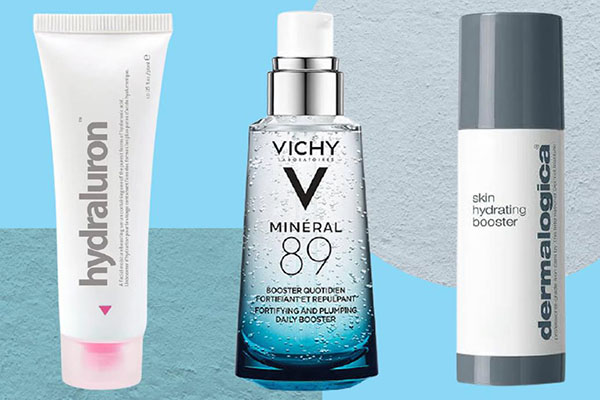When it comes to skincare, understanding how different ingredients interact is essential for achieving desired results. One common question that arises is whether it’s safe and effective to use salicylic acid in conjunction with niacinamide and hyaluronic acid. In this blog post, we will explore the compatibility and potential benefits of combining these three popular skincare ingredients.
Understanding Salicylic Acid, Niacinamide, and Hyaluronic Acid
Before we delve into the combination aspect, let’s briefly understand each ingredient individually:
Salicylic Acid
Salicylic acid is a beta-hydroxy acid known for its exfoliating properties. It is commonly used in skincare products targeting acne, as it penetrates the pores and helps remove dead skin cells, excess oil, and debris, thereby preventing breakouts and promoting clearer skin.
Niacinamide
Niacinamide, also known as vitamin B3, is a versatile skincare ingredient that offers multiple benefits. It helps regulate sebum production, improves skin texture, reduces the appearance of pores, and enhances overall skin barrier function. Niacinamide is also known for its anti-inflammatory properties, making it suitable for addressing redness and irritation.
Hyaluronic Acid
Hyaluronic acid is a hydrating powerhouse that attracts and retains moisture in the skin. It helps maintain skin hydration levels, plumps up the skin, and minimizes the appearance of fine lines and wrinkles. Hyaluronic acid is a popular choice for all skin types, including dry and dehydrated skin.
Compatibility of Salicylic Acid with Niacinamide and Hyaluronic Acid
One concern often raised is the compatibility of salicylic acid with niacinamide and hyaluronic acid. There have been claims that these ingredients can cancel each other out or cause adverse reactions. However, these concerns are largely unfounded.
Salicylic acid is compatible with both niacinamide and hyaluronic acid. It’s important to note that the pH levels of products can affect their compatibility. Ideally, salicylic acid should be formulated at a pH of around 3 to 4, while niacinamide and hyaluronic acid work best at a slightly higher pH range of 5 to 7. When formulated within these ranges, the ingredients are unlikely to negatively interact with each other.
Benefits of Combining Salicylic Acid, Niacinamide, and Hyaluronic Acid
Now that we know the ingredients are compatible, let’s explore the potential benefits of combining them in your skincare routine:
- Addressing Acne Concerns: Salicylic acid’s exfoliating properties combined with niacinamide’s sebum regulation can help reduce acne breakouts and minimize pore congestion. Hyaluronic acid ensures the skin stays hydrated during the acne treatment process.
- Enhanced Skin Texture: Niacinamide and salicylic acid both contribute to improving skin texture. Niacinamide helps refine the appearance of pores and smooth out uneven skin tone, while salicylic acid’s exfoliation promotes a smoother complexion.
- Hydration Boost: Hyaluronic acid’s ability to attract and retain moisture synergizes with niacinamide and salicylic acid to keep the skin hydrated and balanced. This is particularly beneficial for oily or combination skin types.
- Reduced Redness and Inflammation: Niacinamide’s anti-inflammatory properties can complement the soothing effects of salicylic acid, making this combination ideal for calming redness and inflammation associated with acne-prone or sensitive skin.
- Anti-Aging Effects: Hyaluronic acid’s hydrating properties can help plump up the skin and diminish the appearance of fine lines and wrinkles. Niacinamide, with its ability to support the skin barrier, and salicylic acid, known for its exfoliating properties, can further contribute to a smoother and more youthful complexion.
Proper Usage and Application
To make the most of the combination of salicylic acid, niacinamide, and hyaluronic acid, it’s important to follow these guidelines:
- Patch Test: Before incorporating any new products or combinations into your skincare routine, perform a patch test to check for any adverse reactions or sensitivities.
- Product Layering: Apply salicylic acid as the first step in your skincare routine after cleansing. Follow it with niacinamide, allowing a few minutes for each product to absorb before layering the next. Finally, apply hyaluronic acid to lock in moisture.
- Frequency: Start by using these ingredients every other day or a few times a week to assess your skin’s tolerance. Gradually increase the frequency as tolerated.
- Sun Protection: Salicylic acid and niacinamide can increase skin sensitivity to the sun, so it’s crucial to apply a broad-spectrum sunscreen with an adequate SPF during the day.
Possible Side Effects and Precautions
While the combination of salicylic acid, niacinamide, and hyaluronic acid is generally safe for most individuals, it’s essential to be aware of potential side effects and take necessary precautions:
- Dryness or Irritation: Overuse or incorrect application of these ingredients can lead to dryness, redness, or irritation. If you experience any discomfort, reduce the frequency of use or consult a dermatologist.
- Allergic Reactions: While rare, some individuals may have an allergy or sensitivity to one or more of these ingredients. If you notice any signs of an allergic reaction, such as itching, swelling, or rash, discontinue use immediately and seek medical advice.
- Consultation with a Dermatologist: If you have specific skin concerns or are using other topical medications, it’s always advisable to consult a dermatologist to ensure the compatibility and suitability of combining these ingredients.
Conclusion
Combining salicylic acid, niacinamide, and hyaluronic acid can be an effective approach to address acne, improve skin texture, and provide hydration. When used properly and in appropriate formulations, these ingredients work synergistically to promote a healthier and more balanced complexion. Remember to patch test, follow the correct order of application, and be mindful of any potential side effects. By incorporating these ingredients into your skincare routine, you can unlock the benefits of each and achieve your desired skin goals.




